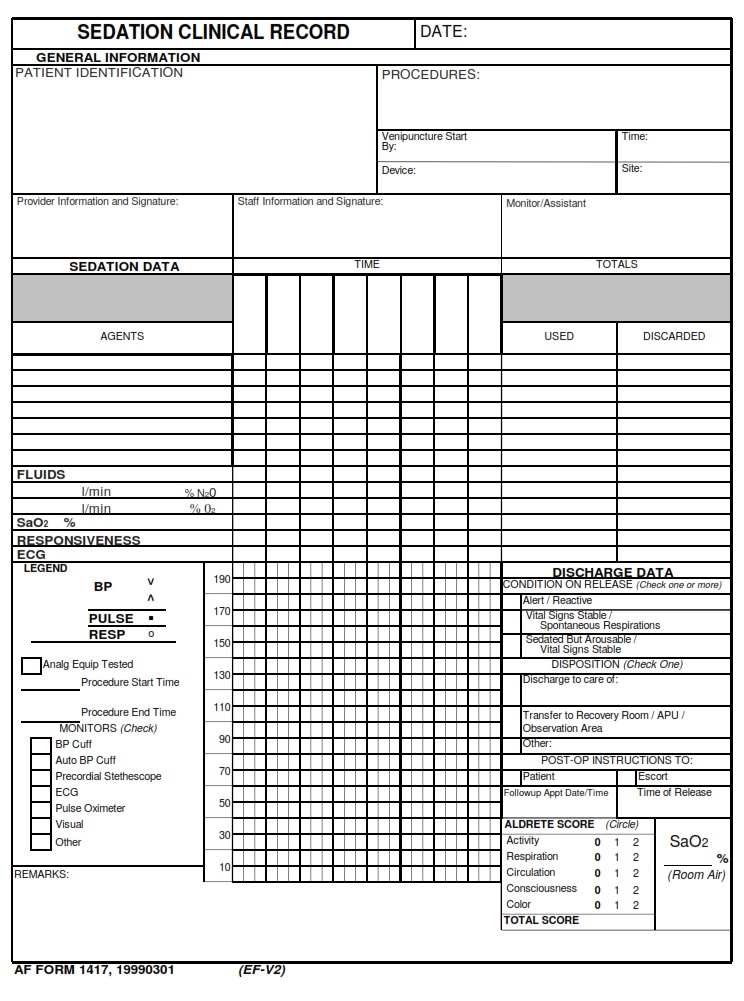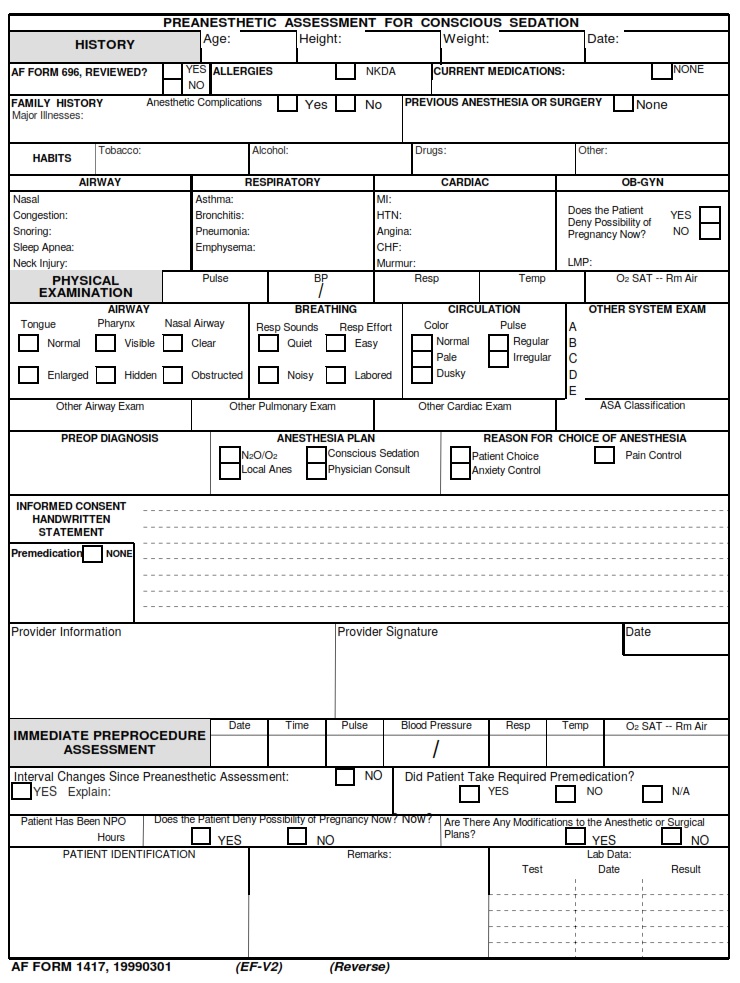AF-FORMS.COM – AF Form 1417 – Sedation Clinical Record – Have you ever wondered what goes on behind the scenes during a sedation procedure? The AF Form 1417 – Sedation Clinical Record holds the key to unlocking the intricacies of these delicate medical interventions. From documenting patient vital signs to recording medication dosages, this crucial form plays a pivotal role in ensuring the safety and efficacy of sedation in clinical settings. In this article, we will delve into the fascinating world of sedation medicine and explore how this seemingly mundane form is actually a treasure trove of invaluable information for healthcare professionals.
As we peel back the layers of the AF Form 1417, we will uncover the meticulous documentation that takes place before, during, and after a patient undergoes sedation. This record provides an intimate look into the decision-making process of healthcare providers as they carefully tailor sedative regimens to individual patient needs. Moreover, it serves as a comprehensive roadmap for tracking patient responses, adverse reactions, and overall procedural outcomes. Join us on this journey as we unravel the significance of this unassuming document and gain insight into its role in shaping modern sedation practices.
Download AF Form 1417 – Sedation Clinical Record
| Form Number | AF Form 1417 – |
| Form Title | Sedation Clinical Record |
| Edition Date | 3/1/1999 |
| File Size | 22 KB |
AF-Form-1417-Sedation-Clinical-Record.pdf (44 downloads )
What is an AF Form 1417?
The AF Form 1417, also known as the Sedation Clinical Record, plays a crucial role in documenting sedation procedures within the military healthcare system. This detailed form provides comprehensive information regarding the patient’s medical history, vital signs, pre-sedation assessment, medication administration, post-sedation monitoring, and any adverse events that may occur during the procedure. It serves as a vital tool for healthcare providers to ensure patient safety and proper management of sedation in clinical settings.
Furthermore, the AF Form 1417 is designed to adhere to strict regulatory standards and protocols for sedation practices within the Air Force medical facilities. By meticulously recording essential details such as patient identification, type and dosage of medications administered, and continuous monitoring parameters, this form maintains a standardized approach to sedation management. Ultimately, it not only serves as a legal document but also fosters accountability and quality assurance in delivering safe and effective sedation care to military personnel and their families.
Where Can I Find an AF Form 1417?
Are you in search of the elusive AF Form 1417? Look no further, as this vital document can be found within the medical realm, specifically in sedation clinical records. Designed to capture critical details during sedation procedures, the AF Form 1417 serves as a comprehensive record-keeping tool for healthcare professionals. Whether you’re a nurse administering sedation or a physician overseeing the process, this form is instrumental in documenting key information such as patient vitals, medication administration, and procedure specifics.
You won’t find the AF Form 1417 lying around on just any desk or office – it’s a specialized document that resides within healthcare facilities where sedation procedures are performed. From hospitals and surgical centers to dental clinics and specialized treatment facilities, these are the places where you’ll encounter this crucial form. Given its importance in ensuring patient safety and quality care delivery during sedation interventions, securing access to the AF Form 1417 is essential for any healthcare professional involved in sedation practices.
AF Form 1417 – Sedation Clinical Record
When it comes to sedation during medical procedures, the AF Form 1417 – Sedation Clinical Record plays a crucial role in documenting and ensuring patient safety. This form not only records the type and dosage of sedative administered but also monitors vital signs, level of consciousness, and any adverse reactions experienced by the patient. By meticulously recording these details, healthcare professionals can track the effectiveness of the sedative, identify any potential issues or complications, and make informed decisions about future sedation strategies.
Moreover, the AF Form 1417 serves as a valuable tool for communication among healthcare providers. It provides a comprehensive overview of the sedation process, enabling different practitioners involved in the patient’s care to understand exactly what transpired during the procedure. This fosters seamless continuity of care and allows for efficient collaboration among medical teams. Additionally, it serves as a legal document that ensures compliance with regulations and guidelines governing sedation practices within a healthcare facility. Ultimately, this form plays an instrumental role in promoting patient safety and quality care delivery during sedated procedures.

